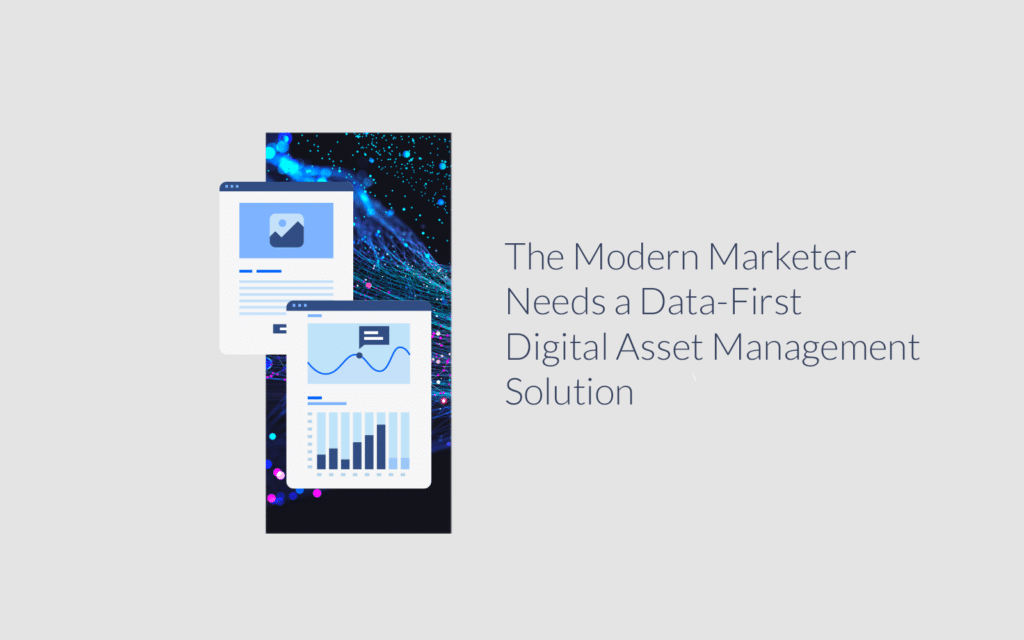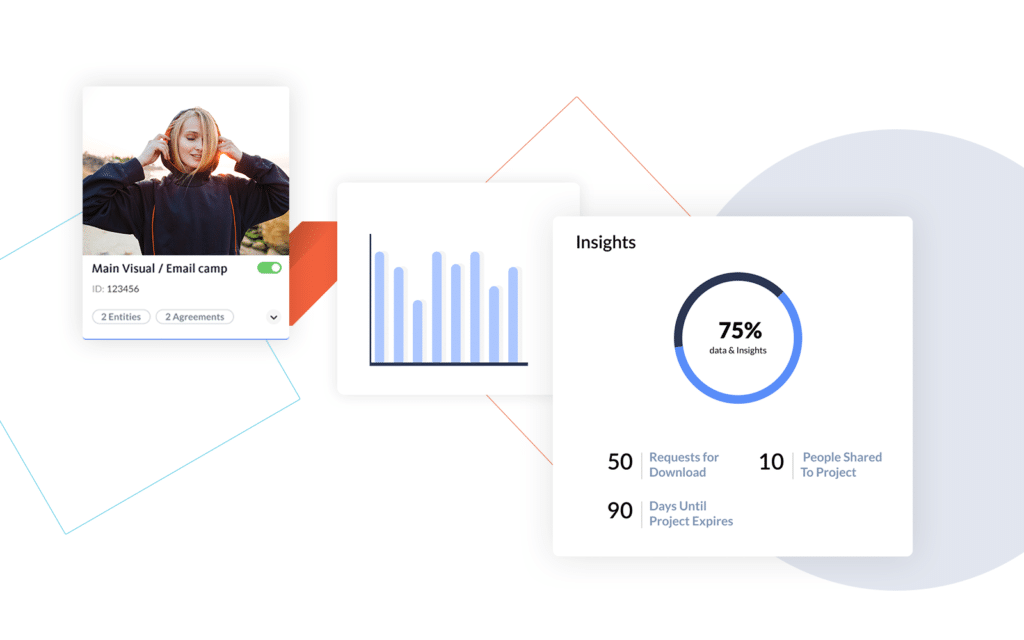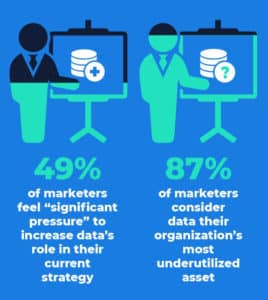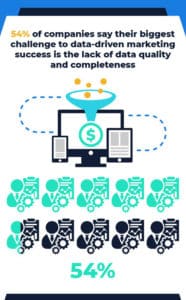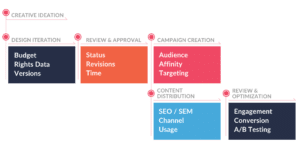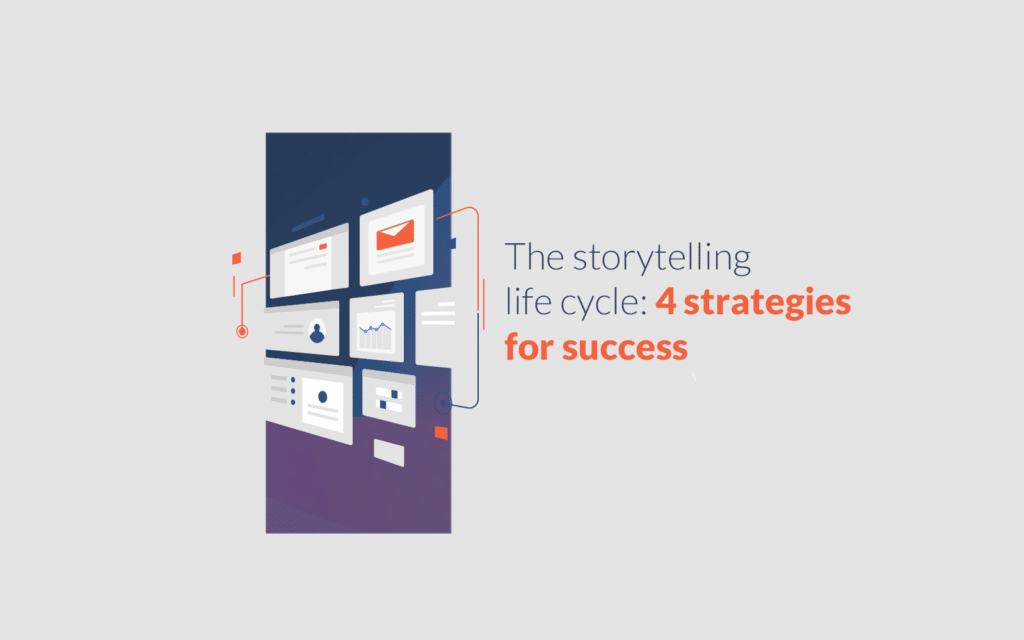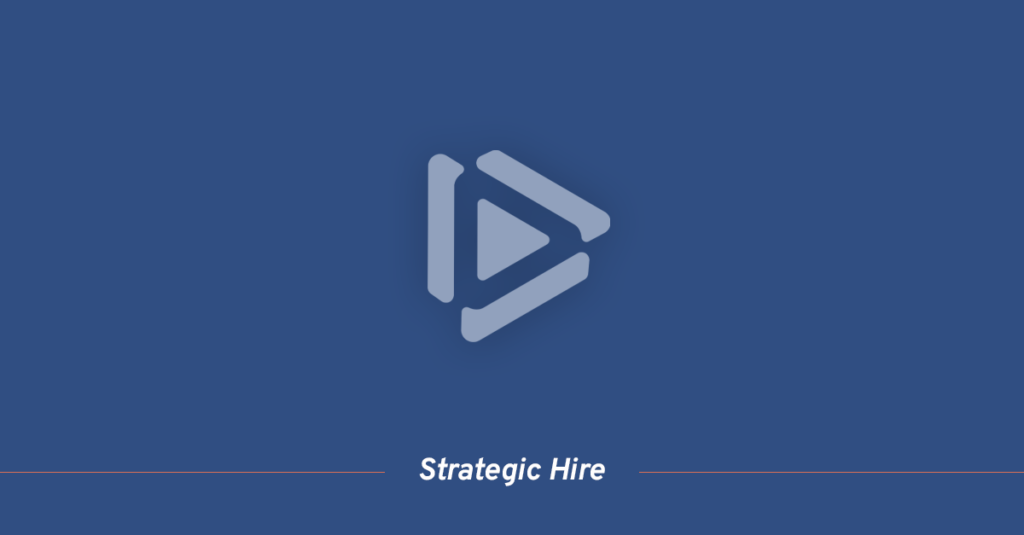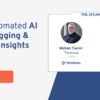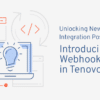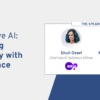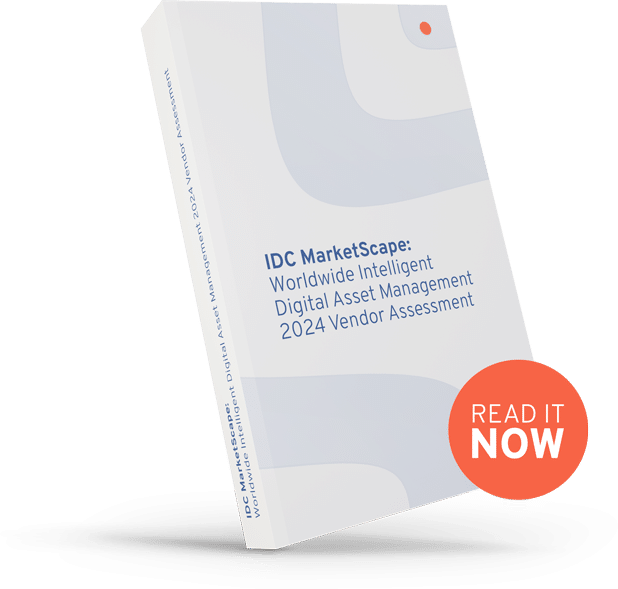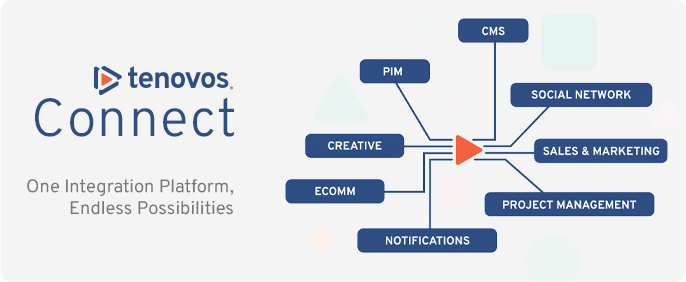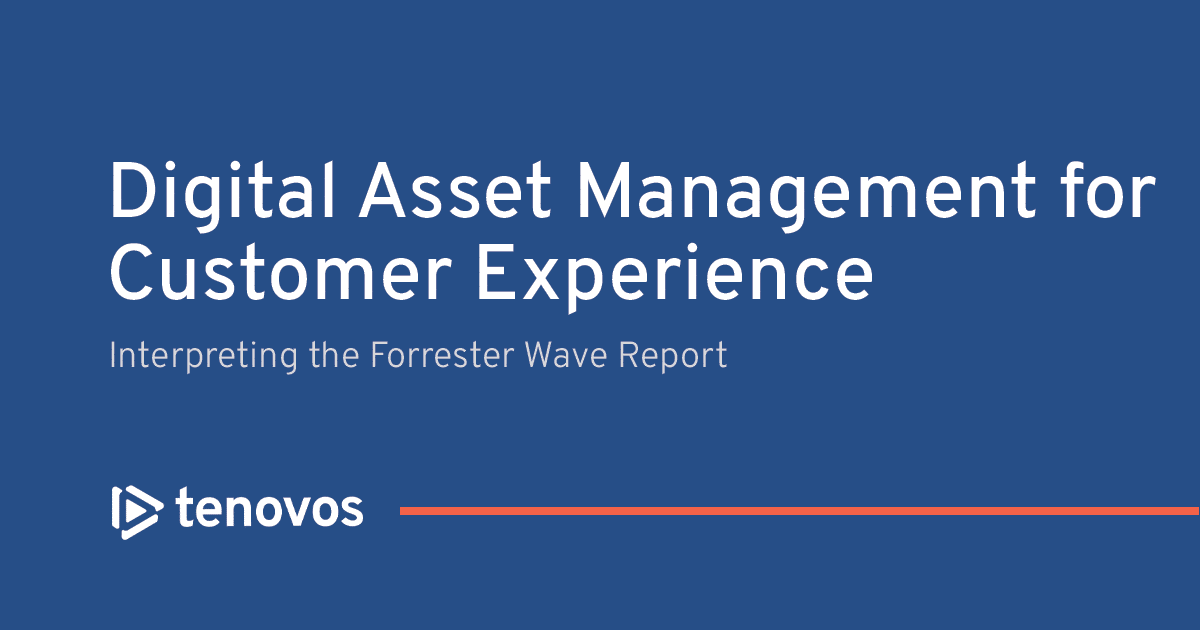
The latest Forrester Wave report on Digital Asset Management (DAM) for Customer Experience has just been published, and like many, perhaps you’re wondering how to make the most of this incredible resource.

Full disclosure, Tenovos is named in the report as a ‘strong performer’. As a startup company that is only three full years old and making its first appearance in a Forrester report, being evaluated as a strong performer is a big accomplishment for us and speaks volumes about what we’re doing in the market.
That said, our industry experts have been in the DAM space for a long time. They’ve all used Forrester’s guidance in the past to evaluate vendors, and so we thought it would be a good idea to share our experts’ insights with you, to help you interpret the report and use it to inform your vendor selection process.
Let’s break it down.
Structure
Forrester has developed a 27-criterion evaluation of the DAM for customer experience space, and within that evaluated 14 vendors (of which Tenovos is one, as mentioned above). The criteria are split into three primary categories: Current Offering, Strategy, and Market Presence. Each vendor is given criteria scores, and then placed on the Wave as leaders, strong performers, contenders, or challengers.
The report provides a breakdown of how each DAM vendor scored across those three categories, in addition to their individual scores for each criteria. Forrester shares how it weights each criteria to help you understand how they prioritize performance.
You can find the full Forrester Wave methodology here.
Current Offering vs. Strategy:
Which is more important?
Let’s get right into this question, as it’s probably the most important one for you to consider when evaluating DAM vendors.
Here’s a quick tl;dr on this section: you want to look at criteria that are more reflective of the future, and not just things that are fundamental current dimensions of digital asset management. Read on for more on why.
Read the Forrester Wave Report on Digital Asset Management in Customer Experience to help you choose the right DAM for your organization.
Click here to download the report.
There are some DAM vendors who have been in the space a long time and are really good at what they do. These companies have robust capabilities today that may satisfy all of your current needs and a little bit more. While these organizations are great choices for your DAM platform, ask yourself if they’re built to grow and change as your business needs evolve.
Think about the last five years, and how much change your business has likely experienced. The way your team goes to market, the expectations of consumers, the importance of brands, and how the digital world just continues to evolve day after day. The things that are innovative today are old news tomorrow… that’s just the way of the world now.
The DAM space is similar, in that the functionalities that are evaluated as part of the Current Offering category are really just table stakes. Library services, workflow management, clean user interfaces, DAMs today just have to do these, and do them well.
Now, you might say, when reading the report, that some DAM vendors score much higher than others for different functionalities. Well, you’re right. But that’s where things get difficult in your evaluation, because you need to decide how to prioritize the strength of the current functionality alongside the long-term strategic direction of the platform.
It’s our suggestion that aligning to the strategic vision of a DAM vendor is going to provide the most value to you in the long run. That’s because, as mentioned above, things change fast. But DAMs are complex systems that take time to implement, are not easy to swap between, and that require a lot of internal buy-in to be successful. No one wants to be changing DAM vendors every few years as your requirements evolve.
Within the Strategy category, you’re able to assess how companies approach the market and get a sense for whether or not Forrester agrees that their vision is realistic. It evaluates the roadmap, and gives an assessment of each vendor’s financial performance as well.
We’ll get into more on strategy below, but suffice it to say, the best approach is to ensure a vendor’s current offerings do match your needs, but then focus on their long-term vision and strategic direction to make sure it’s the right DAM for you in the future, as your needs grow.
What are the key criteria to evaluate?
The Forrester Wave evaluates DAM vendors on 27 criteria, which are reflected in 15 higher-level criteria. While each of these categories is important, there are a few that we believe are the most interesting to look at when evaluating your vendors. We’ve provided a breakdown here, with some thoughts on each.
Current Offering – Library services:
Library services are absolutely essential to the success of your DAM. Without this foundational capability, nothing in the DAM works. In fact, a decade ago, the most important characteristic of a DAM was how well it organized and indexed content for searchability.
But DAM vendors that focus on archiving content really well, rather than activating content, are living in the past. Today, and looking to the future, how your DAM integrates and activates content, and how it can measure the impact of your content by channel, is much more significant to your business than its ability to store content.
So while library services are incredibly important, they’re also table stakes. Archiving content is the past. Activation is the future.
“Archiving content is the past.
Activation is the future.”
Current Offering – Enterprise platform integration:
As you’re evaluating DAM vendors, you’ll find two primary camps. You have certain large vendors who have DAM systems within a wider service offering. Purchasing the DAM is taking on just one part of a larger suite of products. There are some pros to these vendors — just think about Adobe and how closely connected their DAM is to their CMS platform. However, Adobe’s top priority is their CMS, meaning their DAM rarely gets prioritized for innovation and improvements.
On the other hand, you have vendors who are solely focused on providing a world-class DAM platform. The benefits here are obvious — having a vendor that pours all its resources into the software that you’ve purchased can only lead to a better DAM for you. But you run the risk of having a DAM that operates in a silo within your organization, if it can’t integrate well with other systems.
That’s why enterprise platform integration is such an important category for you to consider during your evaluation. Think about your DAM and the place it should have in your organization. At Tenovos, we believe DAMs should be as important as any other tech in the enterprise ecosystem of big consumer brands. Therefore, enterprise platform integration is critical so that you have interoperability between systems, and your content can be activated wherever it’s needed.
Some top systems to consider here are integrations with your product information management system (PIM), your social media publishing software, CMS platform, and collaborative work management platforms to tie into enterprise workflows.
Strategy – Product vision
We’ve already said a lot in this article about the future vision of a DAM platform, and how important it is to your evaluation. But it’s worth mentioning again that, as your industry evolves and the digital revolution continues, your requirements for a DAM are going to change with it. Selecting a vendor based solely on current offerings is not going to serve you in the long term.
So, what is a good product vision?
That depends on how you see the future. At Tenovos, we believe the future is all about activating content, measuring its impact across channels, and leveraging those insights to inform content decisions on a daily basis. Today’s DAM platforms are great libraries of content, they improve productivity through workflows, and in some cases can help distribute content effectively.
But the future of content is much more granular. It’s a future where buyers and consumers expect personalized experiences. They want to see themselves in images, and they crave storytelling as a way to consume messages. Today, we’re doing a lot of guessing. Tomorrow, we should have data and insights to help us make these decisions.
Forrester has scored each vendor’s vision in their report based on their assessment of that vendor’s ability to achieve the vision. When you’re looking at this category, take it as an indication that what each vendor says is their vision is something they can actually achieve for you. And if that vision is something you get excited about, then maybe you’ve found your next DAM provider.
Strategy – Market approach
Market approach is Forrester’s evaluation of how DAM vendors go to market, and if their approach is sound. As with other categories, you have different groups. The first are your legacy vendors who provide a strong DAM platform, and continue to do the things that are working, or who haven’t really changed their approach.
The second group are the disrupters, like Tenovos, who are new on the scene and are pushing the boundaries of what it means to provide a DAM platform.
As you’re evaluating DAM vendors, this is a good indication of the kind of company you’re getting involved with. Are they stagnant or innovative? Are they trying to disrupt the category or maintain stability? Do you want to push the envelope or stay in familiar territory? These are all questions for you to answer, and there’s no right or wrong way to go necessarily.
Strategy – Performance
A quick note here on performance. Forrester defines this as financial performance, and the score is not reflective in any way on the platform’s performance for customers and their users. One component of the performance score is profitability, for example.
What this doesn’t really represent well are startup companies like Tenovos. In our example, as a three-year old company, we are not profitable today because we are intentionally investing our capital to drive growth and innovation instead of cash flow. However we, like many tech startups, are venture-backed with a strong financial position and a documented plan towards profitability. We also have very strong indicators in terms of customer retention and revenue growth rates.
When you’re looking at this section, it’s important to keep these factors in mind so you don’t exclude powerful up-and-coming vendors like Tenovos from your process.
Closing thoughts
The Forrester Wave is an incredible resource for you when evaluating DAM vendors. We hope to have provided you with some insights and food for thought as you review the report, and that you’ve understood the message here that, while the report lists clear leaders, there are other factors we think you should consider when making your decision.
These are things like strategic vision and plans for the platform, abilities to integrate with enterprise platforms, and willingness to innovate within an evolving business landscape where every company is becoming a media company, and content activation is going to be supremely important.
If you’re ready to choose a modern digital asset management platform to help you activate your content, read Forrester’s Wave on DAM vendors for key insights.
If you have any questions about digital asset management, click here to contact us, or book a demo to see the Tenovos platform in action.


